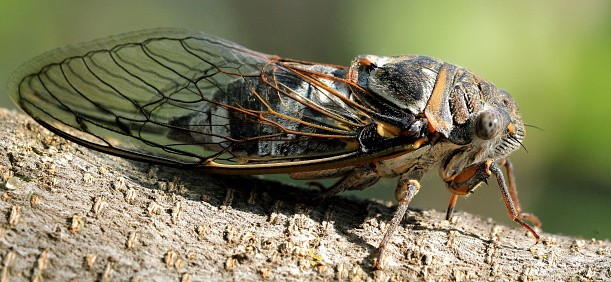Engineers had often looked to nature as inspiration for various designs such as the strength of spiderwebs or the iridescent colors of butterfly wings. In a recent discovery, a natural water repellent nanostructure was found in bugs.
A team from Penn State University published their study in the journal Science Advances. They describe the importance of finding nature water repellent compounds that can potentially be used as coatings for things such as face masks and other personal protective equipment.

Engineer Shu Yan, who was involved in previous biology and engineer teams yet not involved in the current study, had previously talked about being inspired by nature. 'If we can understand why they behave this way, we can design a structure or design a chemistry to have similar functionality without taking hundreds of millions of years to make them, or taking laborious steps to make the same very sophisticated structures as biology does.'
Lin Wang, who is completing his Ph.D. in the Department of Materials Science and Engineering, said, 'For the past few decades, conventionally designed water repellent surfaces have usually been based on plants, like lotus leaves.' Old engineering techniques have mimicked plants to create superhydrophobic or water-resistant surfaces.
Nanostructures
Nanostructures of microfibers would be manufactured into thin layers as a protective coating. These structures have low density and low solid fraction textures.
'The reasoning is if the droplet or object is floating on top of that air, it won't become stuck to the surface,' said Professor Tak-Sing Wong who teaches both mechanical and biomedical engineering and heads the Wong Laboratory for Nature Inspired Engineering.
Instead of looking at plants, they examined bugs such as the eye of a mosquito and the wings of a cicada, an insect similar to leafhoppers.
Using high-resolution electron microscopes, they found nanoscopic hairs on the surface of these bug body parts which they called high solid fraction textures. As they analyzed the tiny hairs, they discovered that the structure was similar to the water-repellent hairs on plants.
If a high density of the nanostructures were the coating of a surface, Wang said, 'it could be possible to maintain the stability of the air layer from higher impact forces.'
The nanostructures were also densely packed, protecting bugs from liquid moving at high speed such as rainfall. What the team had newly discovered had been a natural trait of several insects for a long time.
'For these insect surfaces, repelling water droplets is a matter of life and death. The impact force of raindrops is enough to carry them to the ground and kill them,' said Wang. 'So, it is really important for them to stay dry, and we figured out how.'
Read Also: Meet Xenobots: World's First Living and Self-Healing Robots Using Stem Cells From Frog Embryos
Water-Repellent Coating
Next, the researchers hope to develop a new kind of water repellent coating inspired by the natural nanostructure. Since the coating can resist liquid droplets moving at fast and high impacts, the possibilities are endless.
More than just protective equipment like face masks, the team said that the coating can be bioengineered for things such as small robotic vehicles. The coating can also be developed for drones and even airplanes.
For example, shared Wong, the coating can be used for face shields to protect people from the high-velocity droplets of a sneeze. With traditional coating, the droplets stick to PPE surfaces.
'While we didn't imagine that application at the beginning of this project, COVID-19 made us think about how we can use this design principle to benefit more people,' Wong said. 'It's up to us as engineers to take these discoveries and apply them in a meaningful way.'
© 2026 ScienceTimes.com All rights reserved. Do not reproduce without permission. The window to the world of Science Times.










